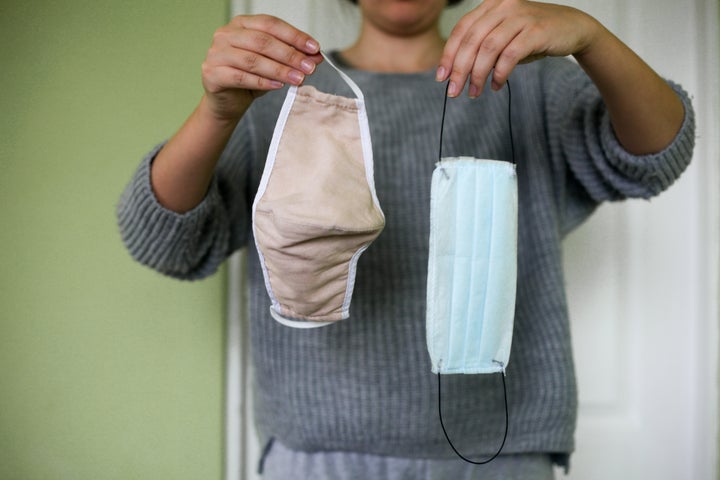Wearing a cloth mask over a surgical mask is now a recommendation to protect against Covid-19 in the United States.
The Centers for Disease Control and Prevention (CDC) updated their mask guidelines to reflect the fact that better fitting masks form better protection against Covid-19. This is because if a mask does not fit to the skin well, viruses may be inhaled and exhaled around the underneath and sides of the mask.
A good way of telling if your mask doesn’t fit properly is if you constantly have to adjust it or there are visible gaps around the edges. One way of making your surgical mask fit better is to knot the ear loops and then tuck in and flatten the extra material close to the face. But another method that’s got people talking is to simply pop a cloth mask over the top – also known as double masking.
A CDC-backed study found when people wore a properly fitted surgical mask underneath a cloth mask, it increased their protection from potentially infectious aerosol droplets by 92%. In contrast, a plain surgical mask on its own blocked around 42% of particles.
It’s worth remembering that not all masks are created equal, so in the real world the levels of protection might vary. The study also didn’t look at what happens if you wear two surgical masks or two cloth masks together.

Dr Anthony Fauci, director of the National Institute of Allergy and Infectious Diseases in the US, told NBC News: “What the CDC is saying is, at minimum, wear a mask. One mask at least, but if you want to really be sure, get a tighter fit with the second mask.”
Fauci admitted that he has double masked himself, as “the fit is better if you put a surgical mask on and put a cloth mask over”. President Joe Biden also frequently double masks, including during January’s presidential inauguration.
Some studies have found that placing a sleeve made of sheer nylon hosiery material around the neck and pulling it up over either a cloth or medical procedure mask can “significantly improve” the wearer’s protection. The ultimate aim is to remove any gaps where aerosols could enter or escape.
Here in the UK, there are no recommendations for double masking, though some experts suggest it’s a good idea.
Dr Bryan Bzdek, research fellow at the University of Bristol’s Aerosol Research Centre, said: “The rationale behind the suggestion to use two masks is that it helps to create a better fit to the face and creates a more complicated path that a particle or droplet would need to navigate to successfully escape.
“Using two masks would be most appropriate if you are using very thin fabrics or single layer masks, as these are not likely to be very efficient on their own.”
It’s widely accepted that the more layers you have in a mask, the better. Studies have found three layers of tightly woven material offer the best protection. Double masking would increase this level of protection even more.
Professor Paul Hunter, from the Norwich School of Medicine at the University of East Anglia, tells HuffPost UK there is some evidence that double masking may help keep the first mask in contact with the skin.
But there are caveats to consider. Wearing two masks might be less breathable for longer periods of time. If this is the case, you should revert back to one mask – preferably a surgical one, as these offer greater levels of protection than cloth masks. Just remember to tie the ear loops so they don’t sag.
